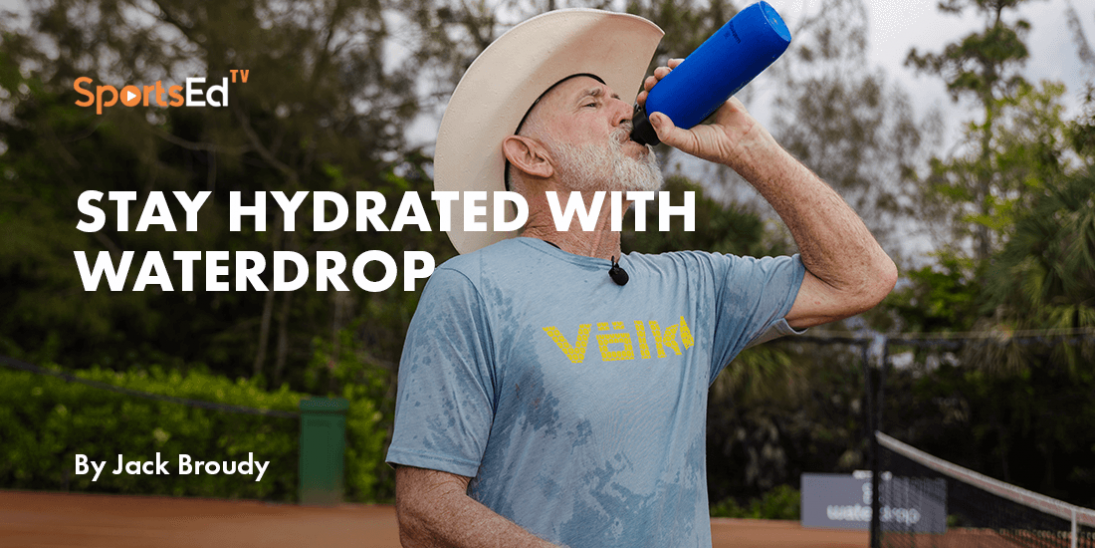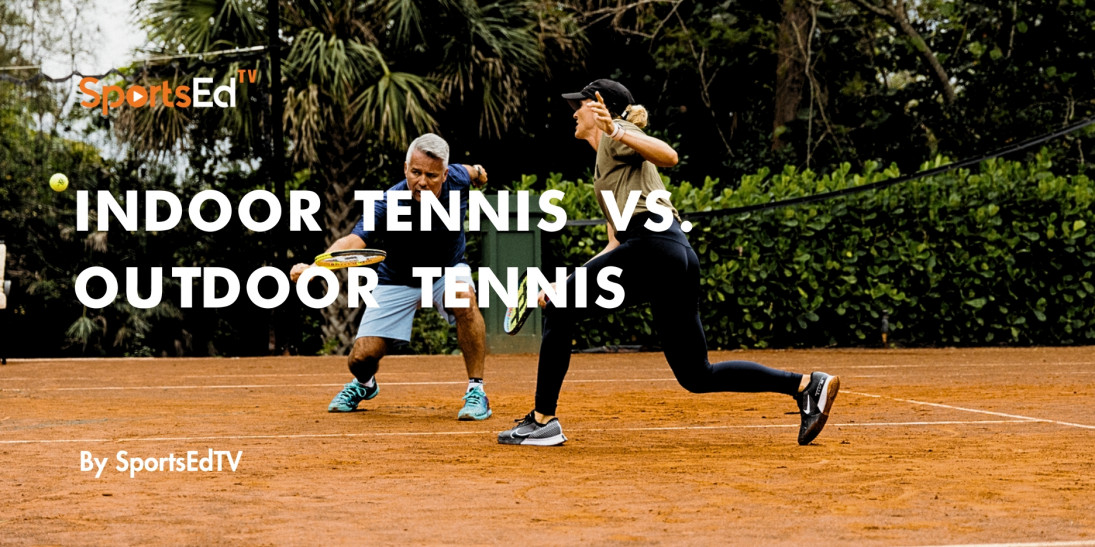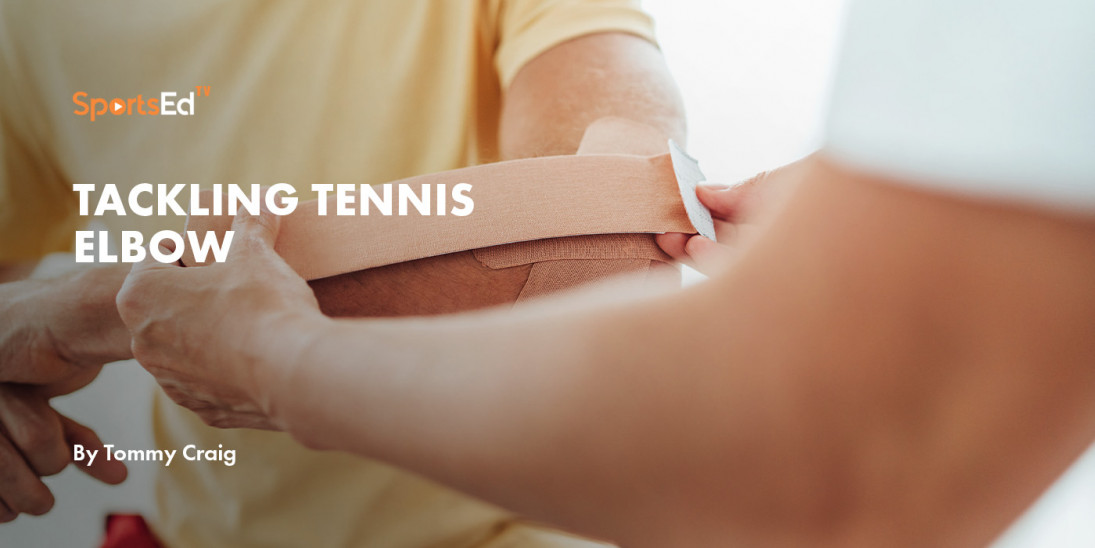Tennis
Welcome and thanks for visiting...

How To Volley Your Best In Tennis
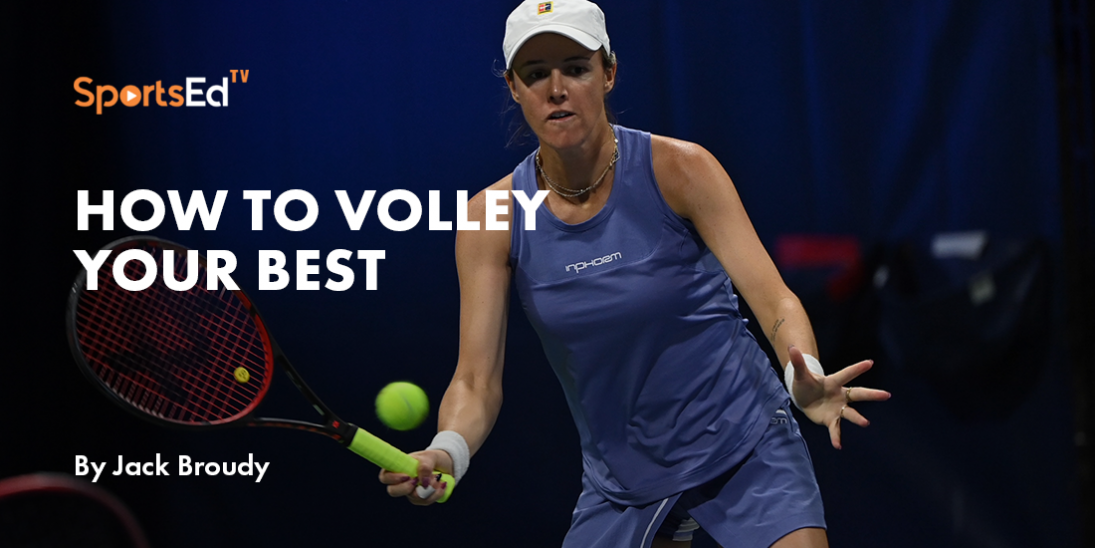
The volley is possibly the most misunderstood of all the strokes in tennis. Conventional teaching espouses “turn, step, and block” for the most part, and is the reason most players suffer on this stroke - both forehand and backhand volley. You can rarely even find a pro with great volleys. Let’s face it. When the conversation of great tennis volleyers comes up, every pro quickly goes straight to Edberg, Sampras, Henin, and Federer. You rarely had ever seen Serena hit anything but a swinging volley (for good reason.)
How difficult is the tennis volley?
The truth is the volley is a “simple” stroke but our Broudy Tennis fundamentals are very different from today’s principles. The volley is NOT a linear stroke. And that is the problem. It is thought of and taught in a linear fashion. It is not a “punch.” It is (like all strokes) a full “body shot” and NOT produced just from the arm. Your arm actually stays rather still and moves off the body’s rotation. Let me break it down.
The volley - forehand or backhand, starts with the proper “line up” which is at the 45º angle to the net. (Most pros will tell you to ”take the ball out in front” which is very misleading. Where exactly is “out in front?”)
The 45 bisects the “vertical” and “horizontal” axis (the 90º angle) and is therefore perfect in nature. This 45º can be seen everywhere - if you know to look. The stance of a basketball player shooting a free throw; where a baseball hitter makes contact with the ball; the angle of the mirror in a telescope; and where a golfer places the ball on a drive. All at the 45-degree angle.
Not only is the 45 the best lineup in your power and comfort zones, but it also gives you your best depth perception. That is because when one focal length is closer to the target than the other your eyes “triangulate” on the target and have a “sharp-shooters view.” (Pretend to shoot a rifle or use a bow and arrow and you’ll see your body naturally lines you up to the 45º angle.)
Also, 45º is the angle that is easiest to change the direction of the ball, cross-court, or down the line. The direction of the ball when the racket face is lined up at this 45º angle can be changed by the slightest of movements of the racket face. This is critical for better players when disguise becomes more and more important.
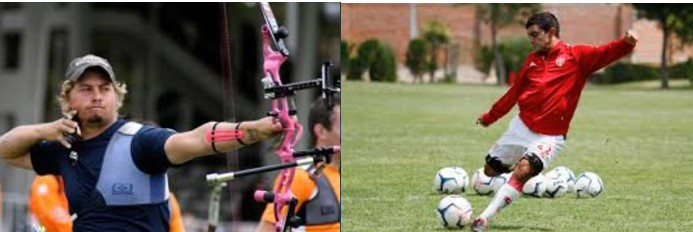
Lining up the 45º angle
Line up your volleys the 45 and you will see improvement on your volleys immediately. Right off your split step line up the 45 with your hips - which may or may not involve your feet, depending on where the ball is. Most importantly, line up your hips to the shot forehand or backhand.
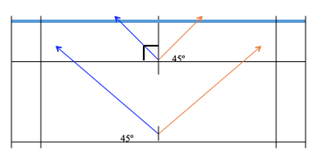 Line Up the 45º angle
Line Up the 45º angle
Use your left (non-hitting) hand to help you set up your arm for the most stability at contact. And NEVER hit or teach a two-handed backhand volley. You are strong enough to hit a one-hander if you do it right! I have 5yo hitting beautiful one-handed backhand volleys.
This means the left hand (right hand for lefties) stays on the racket's throat on your backhand to set your racket face and hitting arm in the proper position.
 A top-ranked player using left hand (using The Cobra)
A top-ranked player using left hand (using The Cobra)
Arm position on Tennis Volley
Finally, understand that the arm position on volleys at contact is “curved” - NOT linear. The arm ideally should not be bent OR straight. It should be curved/bent (like an iron bar.)
A curved arm is much stronger and more stable on contact. Curved is stronger than straight. Take a piece of paper and push it down easily to bend it. Now slightly curve that paper and you’ll see it’s much stronger. That’s why architecture uses arches in construction in climates with inclement weather.
Like Fed, Henin, Edberg, and a few others line up (both sides of your body) at the 45 and make contact with your arm “convex” - NOT straight or bent.
 Notice the line up at the 45º and the bent “convex” arm
Notice the line up at the 45º and the bent “convex” arm
These core fundamentals will absolutely improve your volleys immediately and make you want to get to the net.
Below is an excerpt from The Core Fundamentals of Broudy Tennis on Fundamental #1: The 45º Angle if you are interested in more of the “nonlinear game” of tennis.
CHAPTER ONE: The 45-Degree Angle Contact Point

Here is the foundational and first of our three instructional fundamentals at Broudy Tennis: on every stroke — groundstrokes, volley, overhead, and serve — your optimal contact point will be the 45-degree angle to the net. You are not concerned here with vague concepts such as "hit out in front" or "take the ball early." You will learn to "live at the 45," as we say at Broudy Tennis, and you will love what it does for your game. You will make fewer mistakes, hit more consistently, and even add power to your strokes. This fundamental alone may be a game changer for you, as it has been for many of our players.
How do you find the 45-degree angle to the net? Imagine that you are standing on either the baseline or service line, facing the net, and that there is a line connecting you to the net. The angle formed by this line, along with either the service line or baseline, is a 90-degree angle. Bisect this angle, and you have your 45-degree angle. Any point along this line will be your optimal contact point.

The hitting arm is “curved” at the 45º angle - “convex”
Our Broudy Tennis "Bump Up and Across" drill is a fantastic way to get a handle on how this fundamental works on the volley. On either the forehand or backhand side,
you contact the ball at the 45-degree angle by catching the ball on your racquet strings and lightly bumping the ball up only a foot or two. This will show you your optimal contact point. Then you send the ball back, over the net, as a volley.
Using this fundamental as a basis for a sound volley or groundstroke is so easy, even a junior can do it. In fact, the person demonstrating this in the picture is a 13-year-old Broudy Tennis player! By lining up his body at the 45 and contacting the ball on this imaginary plane, he never misses. He is also using the Broudy Ramp to help feel his hips moving forward, and he practices with the Broudy Wand to work on optimal contact.
Another Broudy Tennis drill that helps players dial in the optimal contact point is our "Serve on Your Knees" drill. We show precisely why the 45-degree angle is the only contact point that works on the serve. If you contact the ball too far behind you, on your follow-through, you will be bunched up like a pretzel. Contact the ball too far in front of you, and the ball will generally go into the net while you fall forward off balance. Contact the ball at the 45 and you will have a clean hit on the ball. You will feel balanced and comfortable. Get yourself a bucket of balls and try this for yourself. You will love the feeling of being able to consistently grab onto the ball and follow through gracefully.
As players become more and more adept at contacting the ball at the 45-degree angle, they invariably discover a particular dynamic in their strokes that can be absolutely thrilling. When you "freeze at the 45," as our players say, your hips stay locked at the 45-degree plane while your upper body continues big into the follow-through. The athleticism involved here can add tremendous power to your strokes. Notably your groundstrokes and serve. Our Broudy Tennis players are acutely aware of this phenomenon and are often obsessed with the 45 because of it. At Broudy Tennis, we help our students unlock this almost magical benefit of the 45-degree contact point to enhance their own game.
Finally, while the 45-degree contact point offers control, efficiency, and power, it also provides an immensely valuable element of disguise. Top players always have two shots on their racquet when they hit at the 45. At the last moment in their stroke, they can alter the racquet face an almost imperceptible amount — and by a law of geometry that some of us may have been awake for in high school geometry class — this slight motion at the racquet head is amplified out at the hit into a significant change of direction for the ball. The player can send the ball crosscourt or down the line. This is why it's so hard for the pros at the net to read the passing shots of players such as Nadal, Federer, and Djokovic.
The 45-degree contact point has been, until now, a secret weapon of the top players. As this fundamental applies
to all the strokes, it adds simplicity to your understanding of the game and will help you on your way to endless rallies, consistent serves and overheads, and effortless volleys.




